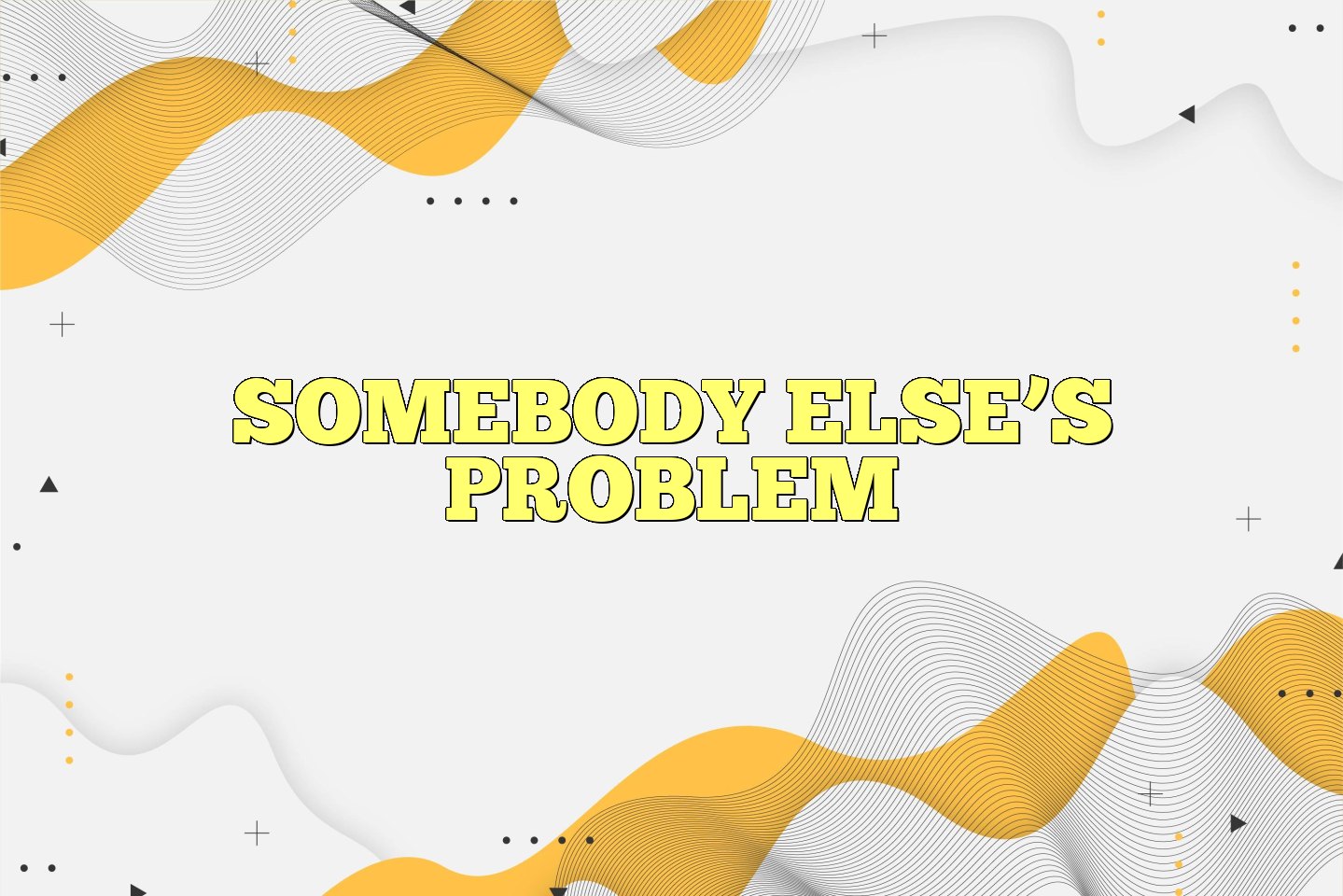The concept of Somebody Else’s Problem (SEP) is a psychological phenomenon where individuals choose to ignore or overlook a problem if they believe it does not directly affect them. This idea was popularized by author Douglas Adams in his science fiction novel Life, the Universe and Everything. However, the concept has real-life implications as it pertains to an individual’s responsibility and perception of a situation. It highlights the tendency for people to shirk their responsibilities and shift the burden onto others, often leading to apathy and inaction. This concept raises important questions about the role of personal accountability and societal responsibility in addressing issues. In this essay, we will delve deeper into the concept of Somebody Else’s Problem and its impact on the individual’s perception of their responsibilities.

Somebody Else’s Problem (also known as Someone Else’s Problem or SEP) is an effect that causes people to ignore matters which are generally important to a group but may not seem specifically important to the individual. Author Douglas Adams’ description of the effect, which he playfully ascribed to a physical “SEP field”, has helped to make it a generally recognized phenomenon. The label is now widely used to focus public attention on matters that might have been overlooked and, less commonly, to identify concerns that a depressed individual should ignore. It has also been employed as trivial shorthand to describe factors that are “out of scope” in the current context.
In psychology
Various areas of psychology and philosophy of perception are concerned with the reasons why individuals often ignore such matters. Optimism bias tends to reduce the subjective importance of some matters. Where multiple individuals simultaneously experience the same stimulus, diffusion of responsibility and/or the bystander effect may release individuals from the need to act, and if no-one from the group is seen to act, each individual may be further inhibited by conformity. On a wider basis, all members of society are exposed to so many messages about pressing matters of concern that information overload may play a part. There may also be a tendency to argue that “I can’t fix this problem, so I need do nothing to reduce it” (a perfect solution fallacy).
However, taking responsibility for negative events that are outside an individual’s control can lead to depression and learned helplessness, particularly in adolescents. Part of the solution is to help the individual to realistically assign a proportion of responsibility to herself/himself, parents and others (step I in the RIBEYE cognitive behavioral therapy problem-solving method).
In politics and economics
French president Nicolas Sarkozy warned the U.S. Congress that “The [decline of the] dollar cannot remain someone else’s problem. If we are not careful, monetary disarray could morph into economic war. We would all be victims.”
The New York Times said that when the Shah of Iran was exiled in 1979 he became “someone else’s problem” from the point of view of President Carter’s administration.
In environment and public protection
When trying to “alert the public to the risk of low-probability, high-consequence disasters such as severe floods… we may be asking the public to act on someone else’s problem”.
British politician Peter Ainsworth acknowledges that “climate change can seem huge, complex, remote and someone else’s problem.”
The Hundred Year Lie describes what it claims is the public myth that food and medicine “toxicity health issues are ‘someone else’s problem’”.
Douglas Adams was himself concerned about such failures to recognise the need for action, and with Mark Carwardine published the book Last Chance to See, which highlighted endangered animal species.
In technology
The sub-goals of programmers working on a shared artifact “can be deferred to the degree that they become what is known amongst professional programmers as an “S.E.P.” – somebody else’s problem.”
Unix became popular because when it was developed at Bell Labs “profits were somebody else’s problem” so there was no reason not to share the source code with universities.